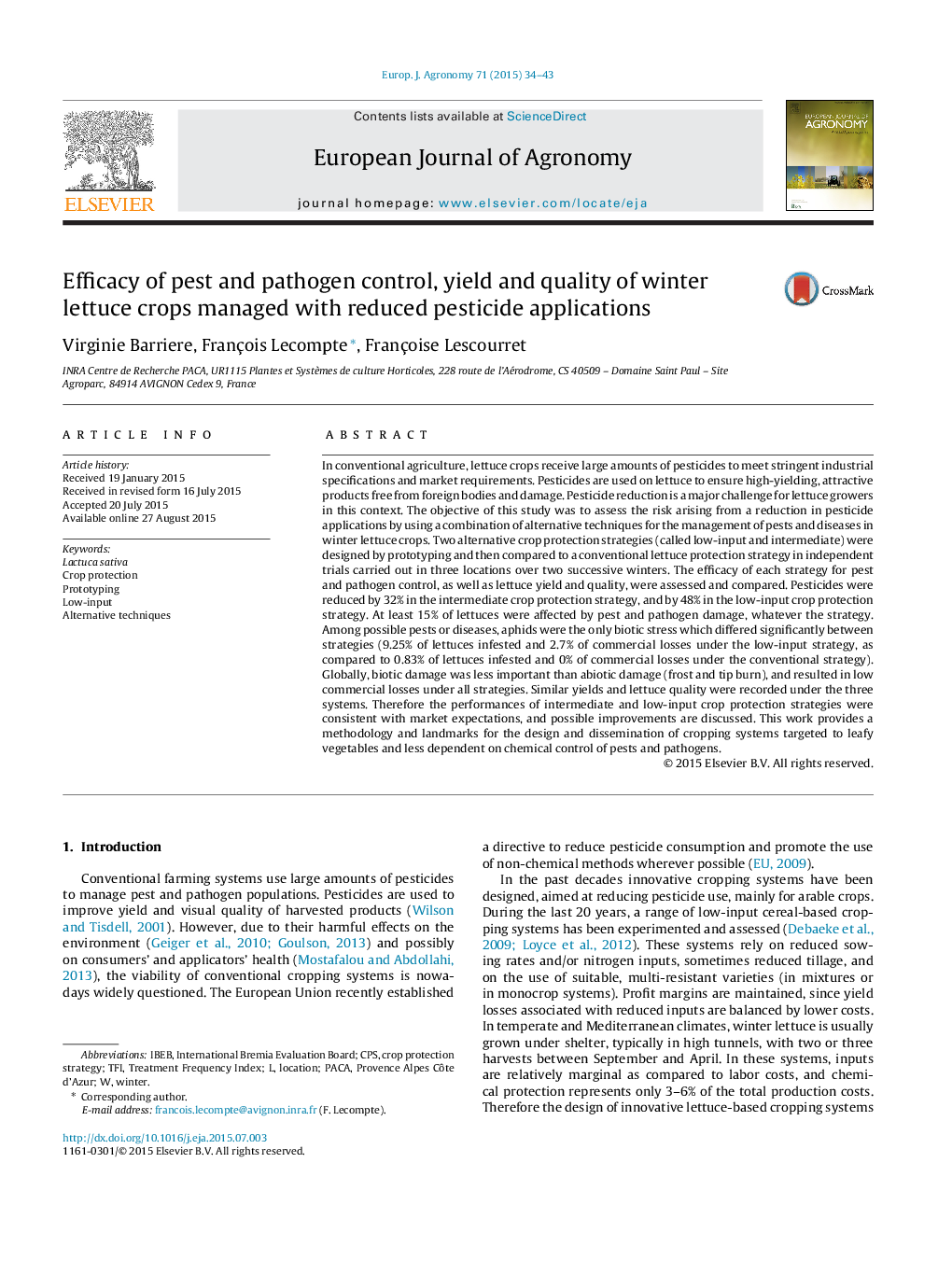| کد مقاله | کد نشریه | سال انتشار | مقاله انگلیسی | نسخه تمام متن |
|---|---|---|---|---|
| 4508744 | 1624454 | 2015 | 10 صفحه PDF | دانلود رایگان |
• Lettuce protection strategies with limited chemical protection were designed.
• Field tests showed pesticide reduction by 30-50% without affecting yield or quality.
• Aphid management was less performant with reduced pesticides and parasitoids.
• Downy mildew and basal rot were correctly managed with alternative strategies.
• This work provides a landmark for the design of more sustainable lettuce cropping systems.
In conventional agriculture, lettuce crops receive large amounts of pesticides to meet stringent industrial specifications and market requirements. Pesticides are used on lettuce to ensure high-yielding, attractive products free from foreign bodies and damage. Pesticide reduction is a major challenge for lettuce growers in this context. The objective of this study was to assess the risk arising from a reduction in pesticide applications by using a combination of alternative techniques for the management of pests and diseases in winter lettuce crops. Two alternative crop protection strategies (called low-input and intermediate) were designed by prototyping and then compared to a conventional lettuce protection strategy in independent trials carried out in three locations over two successive winters. The efficacy of each strategy for pest and pathogen control, as well as lettuce yield and quality, were assessed and compared. Pesticides were reduced by 32% in the intermediate crop protection strategy, and by 48% in the low-input crop protection strategy. At least 15% of lettuces were affected by pest and pathogen damage, whatever the strategy. Among possible pests or diseases, aphids were the only biotic stress which differed significantly between strategies (9.25% of lettuces infested and 2.7% of commercial losses under the low-input strategy, as compared to 0.83% of lettuces infested and 0% of commercial losses under the conventional strategy). Globally, biotic damage was less important than abiotic damage (frost and tip burn), and resulted in low commercial losses under all strategies. Similar yields and lettuce quality were recorded under the three systems. Therefore the performances of intermediate and low-input crop protection strategies were consistent with market expectations, and possible improvements are discussed. This work provides a methodology and landmarks for the design and dissemination of cropping systems targeted to leafy vegetables and less dependent on chemical control of pests and pathogens.
Journal: European Journal of Agronomy - Volume 71, November 2015, Pages 34–43
